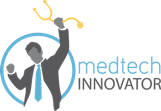New clinical trial at UCSF, based on TGen genomic research, uses multiple drugs to cross blood-brain barrier and attack glioblastoma tumorsContinue reading
Author Archive: AZBio
Capital For Emerging Growth Companies: Six House Bills To Watch
The success of the Jumpstart Our Business Startups (JOBS) Act in the biotech industry means that the work of the Subcommittee on Capital Markets and Government Sponsored Enterprises has taken on increased importance for emerging biotech companies. Current bills being considered could help to further support the search for breakthrough treatments at the next generation of emerging growth biotech companies.Continue reading
Tumor profiling goes public: HTG Molecular Diagnostics sets terms for $50 million IPO
Opportunity Alert: Business Operations Manager, Phoenix Children’s Hospital
Position Summary:
This position is responsible for developing and managing annual research budget, productivity analysis, financial reporting, and analysis for research administration. Continue reading
1st U.S. Patient Discharged from the Hospital without a Human Heart Celebrates 5th Anniversary of Going Home with the Freedom® Portable Driver
More than 220 clinically stable SynCardia Total Artificial Heart patients have received the Freedom® portable driver for over 140 patient years of support. Over 150 of these patients were discharged to recover and exercise while waiting for donor hearts.Continue reading
Rapid growth in bioscience industry in peril
ALSO: AZBio Members can get a special rate of $99 (print and online) for 12 months of the Arizona Capitol Times. Don’t Delay! This special offer ends April 29th. Click Here to subscribe with this special offer by April 29th!
One way or another, if Arizona is going to realize its potential, we as Arizonans need to come together to figure how we are going to invest in Arizona’s future.Continue reading
Clinical Trials in Arizona: How we measure up.
Clinical trials are research studies that explore whether a medical strategy, treatment, or device is safe and effective for humans. Continue reading
We’re Hiring – Molecular Technologist at PinPoint Clinical
Seeking Molecular Technologist for full time position with Pharmacogenomic processing experience
Continue reading
CRITICAL PATH INSTITUTE SECURES REGULATORY SUPPORT FOR SKELETAL MUSCLE SAFETY BIOMARKERS
FDA and EMA Letters of Support Suggest Valuable Research PotentialContinue reading

